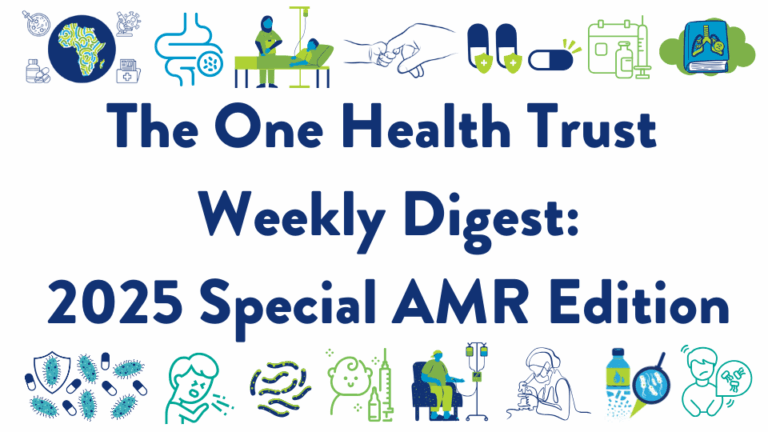September 07, 2020

COVID-19
Unnecessary antibiotic prescribing common among COVID-19 patients. Researchers at the University of Michigan found high rates of early antibiotic use and low rates of bacterial co-infections among COVID-19 patients across 38 hospitals, indicating that unnecessary antibiotic prescribing may be common. Nearly 57 percent of COVID-19 patients included in the analysis received early empiric antibiotics, while only 3.5 percent had a confirmed community-onset bacterial infection. In some hospitals, early empiric antibiotic use in COVID-19 patients was as high as 84 percent. Results suggest that improving the turn-around time for COVID-19 tests and implementing stewardship programs may reduce unnecessary prescribing. [Clinical Infectious Diseases]
Multidrug-resistant C. auris detected among COVID-19 patients in India. A total of 15 cases of candidemia were reported among critically ill COVID-19 patients at an ICU in New Delhi, India-10 of which were infected with multidrug-resistant Candida auris. A majority of patients co-infected with C. auris were elderly, had been hospitalized for prolonged periods, or had underlying conditions. Half of the patients received mechanical ventilation, and 60 percent died. Findings emphasize the importance of infection prevention and control measures to prevent the spread of multidrug-resistant organisms in hospitals, especially amid the ongoing pandemic. [Emerging Infectious Diseases]
Hydroxychloroquine-azithromycin combo linked to mortality in COVID-19 patients. Findings from a systematic review and meta-analysis of several studies suggest that hydroxychloroquine does not decrease the risk of death among COVID-19 patients (pooled RR: 0.83 [0.65, 1.06]), and instead, when combined with azithromycin, the drug may increase one’s risk of death (RR=1.27 [1.04-1.54]). This evidence adds to increasing concerns over the use of unapproved drugs for the treatment of COVID-19. [Clinical Microbiology and Infection]
Household transmission as an important driver of COVID-19 propagation. A systematic review and meta-analysis of 24 epidemiological studies investigating COVID-19 transmission rates primarily in China revealed that infection risk among household contacts was ten times higher than among other contacts (OR = 10.72, 95% CI: 5.70-20.17, p < 0.001). Additionally, within households, adults were about four times more susceptible than children to COVID-19 transmission from a household member (OR = 3.67, 95% CI: 2.76–4.87, p < 0.001). The authors suggest that isolation of COVID-19 patients at home may heighten the propagation of the disease, as more household members are at increased risk of becoming infected. When healthcare facilities operate at full capacity, sheltering facilities could provide a better option. [Journal of Infection]
Eye conditions reported in one-fourth of children with COVID-19. In a cross-sectional analysis of 216 children hospitalized with COVID-19 in Wuhan, China, researchers found that nearly one-fourth had eye conditions, such as conjunctival discharge, eye rubbing, and conjunctival congestion. Patients with systemic symptoms or cough were significantly more likely to develop ocular symptoms (p<0.05), which tended to be mild. Findings may assist clinicians in preventing and treating eye conditions in children with COVID-19. [JAMA Ophthalmology]
Drug Resistance & Global Health
Antibiotic stewardship reduces prescription rates in telemedicine. Findings from a randomized controlled trial revealed that education and individualized feedback for clinicians, as compared to education alone, was more effective in reducing antibiotic prescription rates for respiratory tract infections in the telemedicine setting. Intervention consisted of individualized feedback of personal and practice-wide antibiotic prescription rates each month. While antibiotic prescriptions for all conditions decreased in the post-intervention period for both control and intervention groups, reduction of antibiotic prescriptions for upper respiratory infections (interaction term ratio 0.60, 95% CI 0.47 to 0.77) and bronchitis (interaction term ratio 0.42, 95% CI 0.32 to 0.55), but not sinusitis and pharyngitis, were greater for the group receiving education plus intervention. The authors concluded that stewardship programs should be tailored to underlying conditions in order to achieve a sustainable reduction in antibiotic prescriptions. [Journal of General Internal Medicine]
Hospital stewardship program reduces use of carbapenems. A stewardship program implemented in two medical centers in Washington state was significantly associated with reduced carbapenem use. The policy required infectious disease consultations and post-prescription feedback review for all meropenem and imipenem prescriptions longer than three days and was tied to a 44-72 percent decline in the use of the antibiotics over six years. [Clinical Infectious Diseases]
Oral vancomycin may prevent C diff infection in healthcare settings. A randomized study in North Carolina suggests that oral vancomycin may prevent healthcare facility–onset (HCFO) Clostridioides difficile infection. The 50-patient group randomized to receive vancomycin reported zero cases of HCFO C. diff infection, while the 50-patient control group reported six cases (p=0.03). Each patient in the intervention group received an average of 12 doses of vancomycin, costing $26.04. Results support further research of the antibiotic as C. diff prophylaxis. [Clinical Infectious Diseases]
Flu vaccination during pregnancy is not associated with autism. Findings from a large cohort study in Sweden indicate that flu vaccination during pregnancy is not associated with a child’s risk of autism (p>0.05), supporting existing literature. The study found that children prenatally exposed to the H1N1 vaccine developed autism spectrum disorder at similar rates as children who were not exposed (1.0 vs. 1.1 percent). [Annals of Internal Medicine]
Photo: Shutterstock











